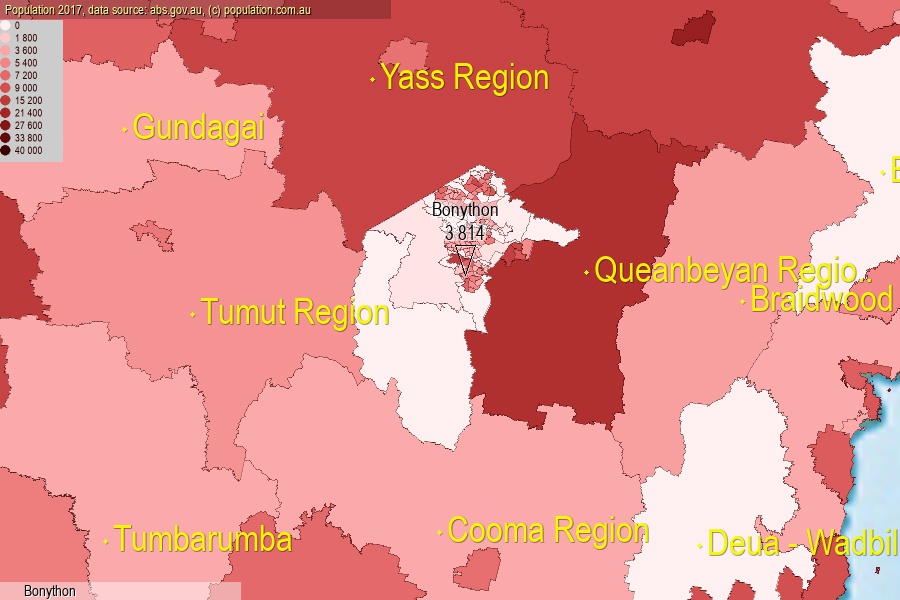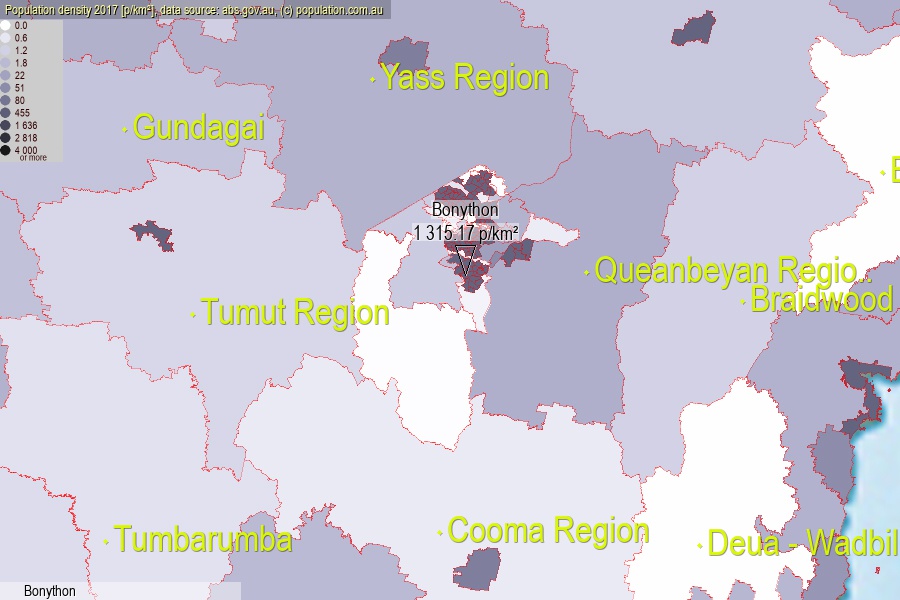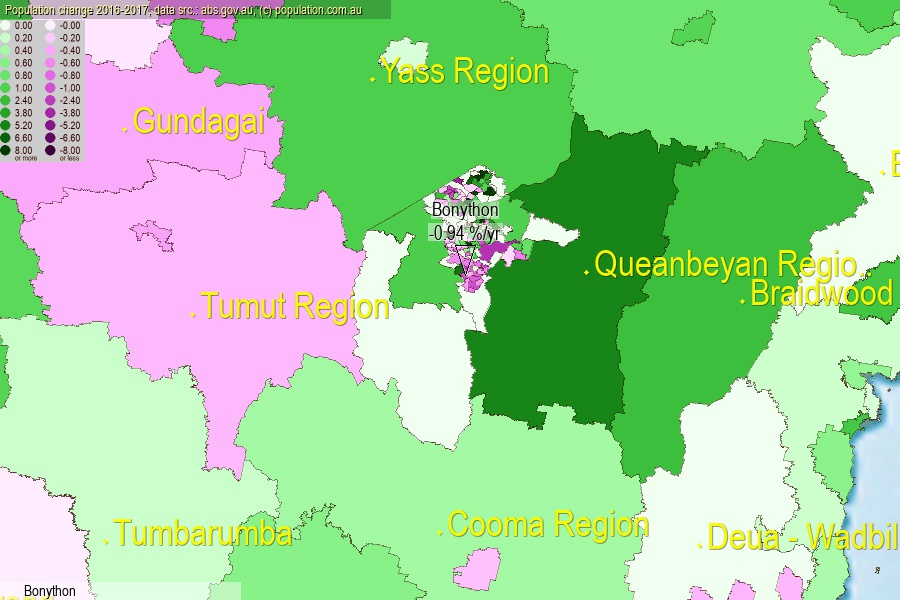 population.com.au
population.com.auLast official estimated population of Bonython (as Statistical Area Level 2) was 3 814 people (on 2017-06-30)[2]. This was 0.02% of total Australian population and 0.91% of ACT population. Area of Bonython is 2.90 km², in this year population density was 1 315.17 p/km² . If population growth rate would be same as in period 2016-2017 (-0.94%/yr), Bonython population in 2025 would be 3 538. [0]



Click to enlarge. Bonython is located in the center of the images.
Population [people], population density [p./km²] and population change [%/year] [2]
View borders » (new window) [4]
[1991-1992] +14.04 %/Yr.
[1992-1993] +4.98 %/Yr.
[1993-1994] +6.85 %/Yr.
[1994-1995] +8.06 %/Yr.
[1995-1996] +6.32 %/Yr.
[1996-1997] +0.31 %/Yr.
[1997-1998] +0.56 %/Yr.
[1998-1999] +0.53 %/Yr.
[1999-2000] +0.11 %/Yr.
[2000-2001] +0.31 %/Yr.
[2001-2002] -0.86 %/Yr.
[2002-2003] -0.36 %/Yr.
[2003-2004] -0.90 %/Yr.
[2004-2005] -0.31 %/Yr.
[2005-2006] -1.16 %/Yr.
[2006-2007] +1.81 %/Yr.
[2007-2008] +2.79 %/Yr.
[2008-2009] +5.92 %/Yr.
[2009-2010] +2.54 %/Yr.
[2010-2011] -0.28 %/Yr.
[2011-2012] +0.13 %/Yr.
[2012-2013] -0.28 %/Yr.
[2013-2014] -0.74 %/Yr.
[2014-2015] -0.61 %/Yr.
[2015-2016] -1.05 %/Yr.
[2016-2017] -0.94 %/Yr.
[0] Calculated with linear interpolation from officially estimated population
[1] Read more about SA2 and Australian Statistical Geography Standard (ASGS) on abs.gov.au
[2] Population data from Australian Bureau of Statistics (Population and density: 2017; change: 2016-2017)
[3] Digital Boundaries: Australian Statistical Geography Standard (ASGS) 2016.
[4] Border coordinates are simplifyed using Ramer-Douglas-Peucker algorithm.